Best Wireless Home Security Systems of 2025
Featuring some of our favorite wireless equipment and industry-leading monitoring services, we recommend cutting the cord with ADT.
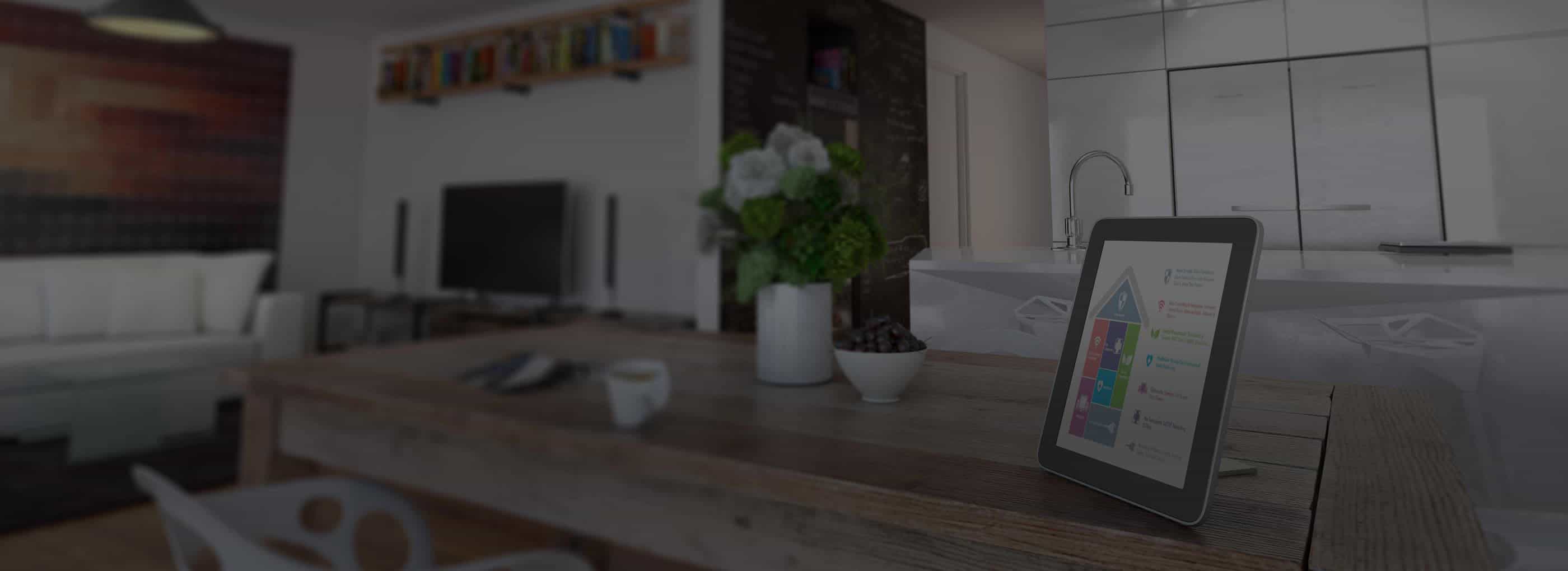
SafeHome.org may receive compensation from some providers listed on this page. Learn More
We may receive compensation from some providers listed on this page. Learn More

Since the company is 150 years old, you may think ADT has old technology. But it has some of the best smart-home capabilities thanks to a recent partnership with Google.

Even though SimpliSafe struggles to integrate with smart-home platforms, you can automate your entire home security system, which lets your system work with your smart home.

When you want premium home security, you can’t go wrong with Vivint. From its monitoring to its technology, Vivint provides premium products at a premium price.
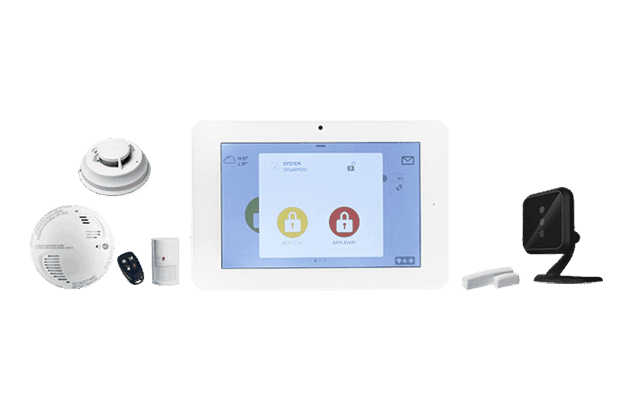
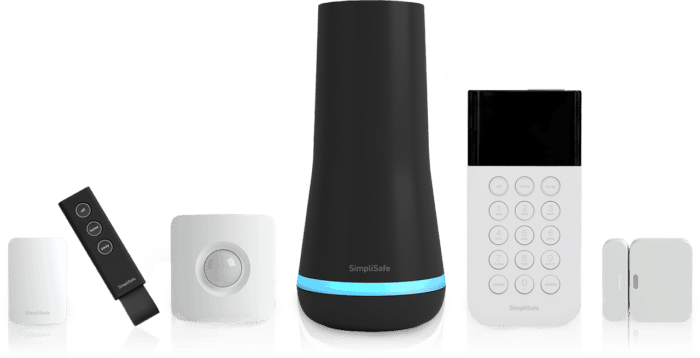

Sometimes you just don’t want wires running throughout your home. It means you have to find spare plugs or use creative ways to hide them from sight. Other times, the only way to get rid of them is by connecting devices to your internal wiring, which requires a technician. It’s why all the best home security systems feature at least some wireless security components.
I tested dozens of these security systems based on the quality of the equipment, the ease of installation, and their extra perks like smart home capabilities and monitoring support. ADT turned out to be the best option, which has gotten even better with its partnership with Google. But I also liked what SimpliSafe, Vivint, and Cove had to offer.
Here’s everything you need to know so you can choose a home security system that’s right for you.
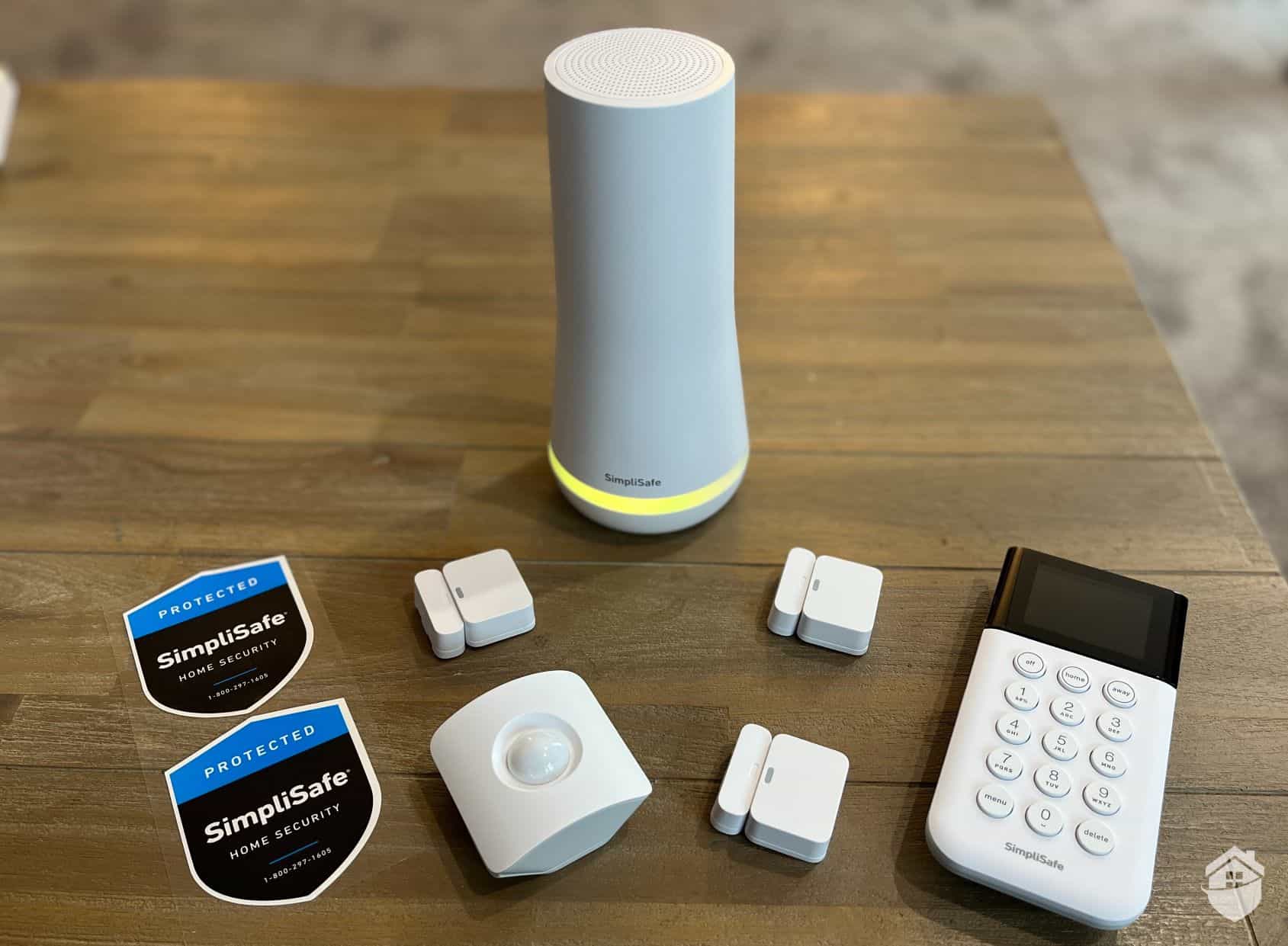
SimpliSafe Essentials Kit
We find the best way to make trustworthy and unbiased recommendations is by testing home security systems ourselves. This means we buy the equipment with our money, install it in our own homes, and test it over weeks or sometimes months. This approach helps us get a feel for what it’s like to live with the security system and study the response times, features, and apps. We use these experiences to make honest recommendations.
Several factors can impact testing home security systems, but we manage to find ways to compare apples to apples. For starters, we test and install all the security systems in one home – a two-story, 2,200-square-foot house owned by one of our security experts. Testing in a real home setup instead of a lab means we can simulate real-life scenarios, leading to more reliable recommendations.
We also buy the same equipment for every home security system and place them in identical locations. You can see the spots around the house where we regularly install equipment below.
We considered many factors when picking the best wireless home security systems. Using our industry knowledge and experience, these are the criteria we think are the most important:
Using these criteria, here is how we chose our top five picks:
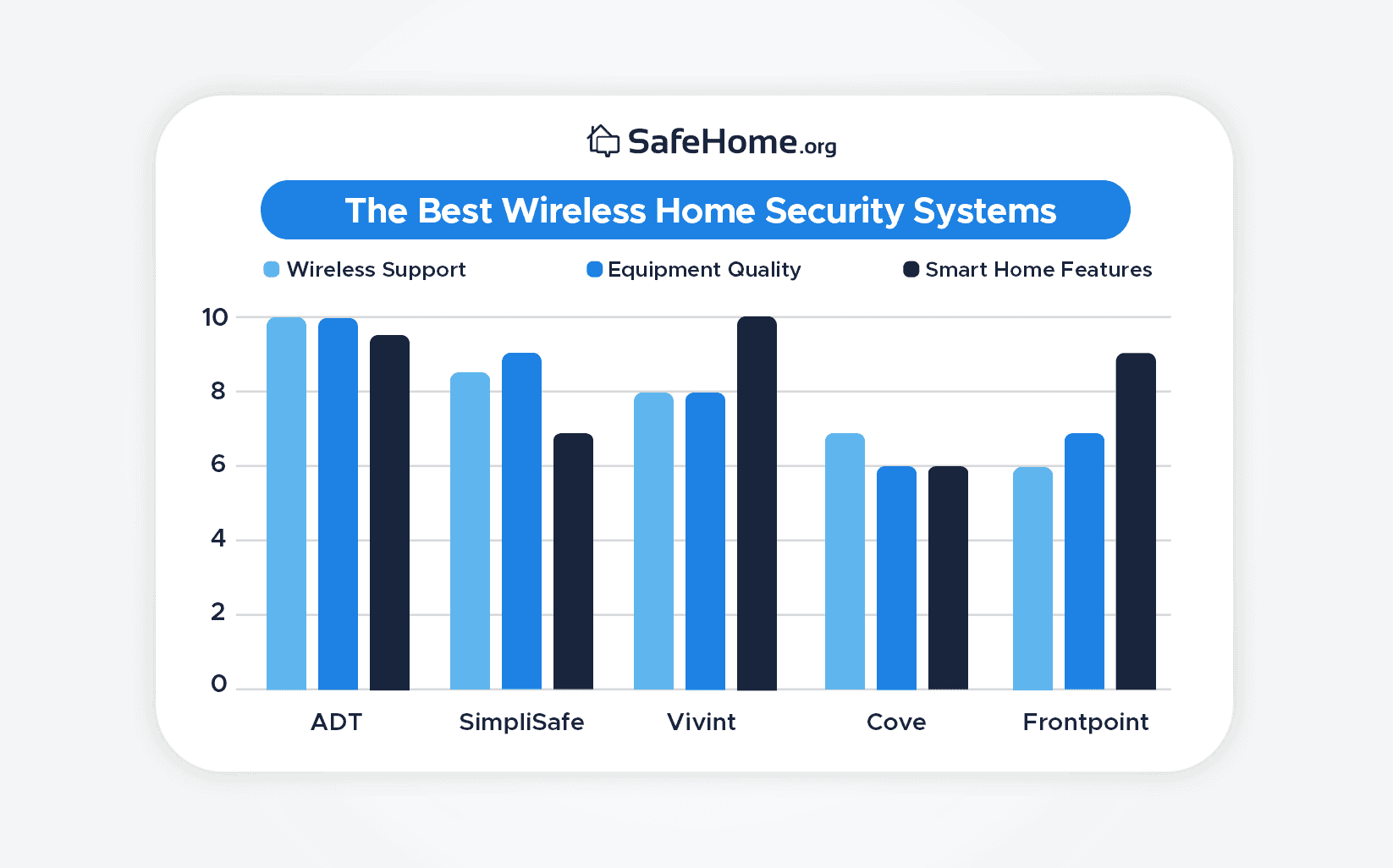
Rating The Best Wireless Home Security Systems
We exclusively cover safety and security equipment. You won’t find reviews on everything from noise-canceling headphones to pillowcases. Our team are experts at testing and assessing home security systems so our readers get educational and insightful recommendations. The team members who contributed to this review were:
Our team has over 75 years of combined industry experience, making us the most accomplished home security team on the internet. Since 2016, we have been featured in many major outlets, including The New York Times and The Washington Post. As a team, we have achieved:
Every recommendation we make is based on first-hand product experience and an understanding of the security industry. Now, let's find out more about our top picks.
| System |
ADT

|
SimpliSafe

|
Vivint

|
Cove Security

|
|---|---|---|---|---|
| Ranking |
1st

|
2nd

|
3rd

|
4th

|
| SecureScore™ | 9.3 | 9.2 | 9.1 | 8.8 |
| Contract length | 36 months, or monthly with self-setup | Monthly | Starting at 42 months | Monthly |
| Installation type | DIY or professional | DIY or professional | Professional | DIY or professional |
| Professional monitoring cost | Starting at $29.99 per month | Starting at $21.99 per month | Starting at $39.99 per month | Starting at $17.99 per month |
| Equipment cost | Packages starting at $499 | Packages starting at $249.96 | Packages starting at $449 | Packages starting at $250 |
| Review | ADT review | SimpliSafe review | Vivintreview | Cove review |

Even though ADT predates wireless technology, most of its components are now wireless or at least have the option to be wireless. The company’s recent partnership with Google propelled ADT’s wireless capabilities even further with the entire Nest lineup of cameras. Pair that with ADT’s industry-leading monitoring services and you have a reliable wireless system you can count on. One drawback is that the ADT Smart Hub needs to be plugged in, so you can’t go fully wireless with an ADT system. That’s the case for pretty much every system though.
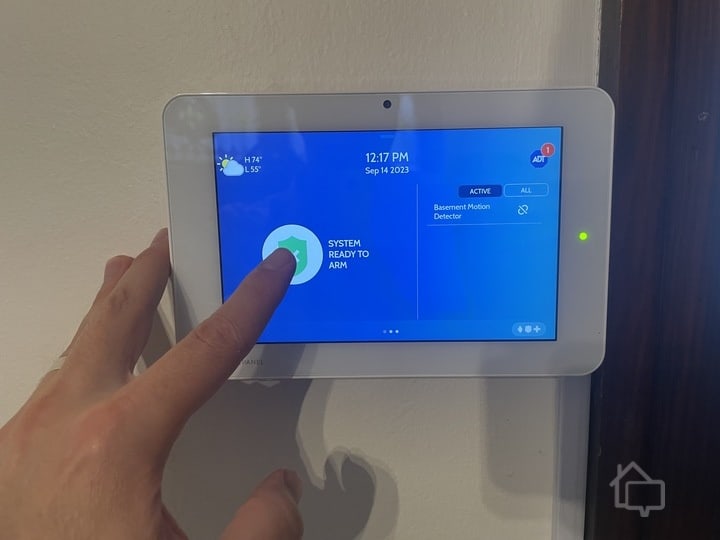
Arming my ADT System
We have to hand it to ADT: When it comes to wireless support, it really goes above and beyond. We already mentioned that the Smart Hub needs to be plugged in, but other than that, all of ADT’s products have a wireless option. What really makes ADT stand out is how it helps keep your wireless system up to date.
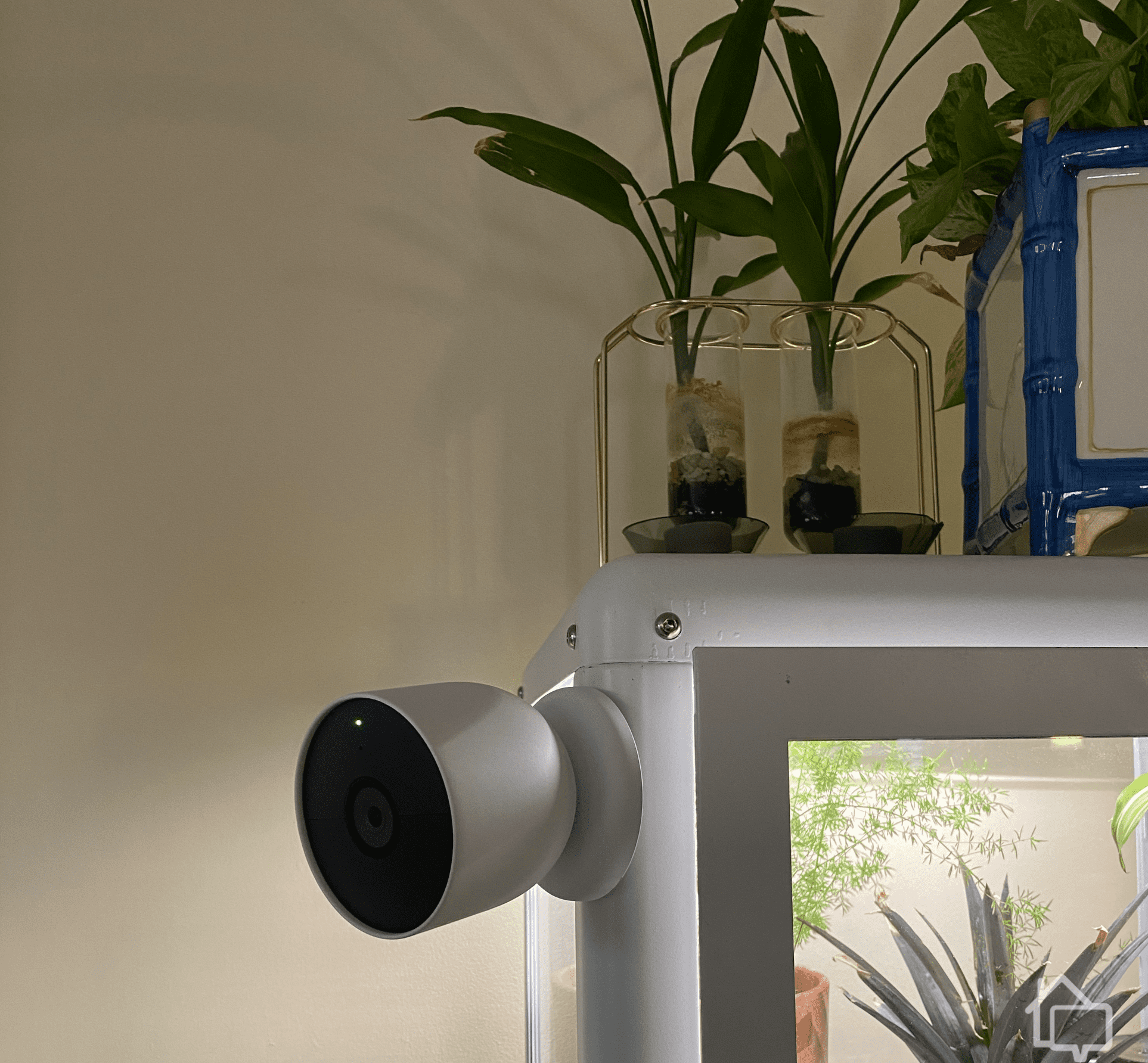
My Nest Cam mounted on the bookshelf.
Maybe we’re dating ourselves a bit, but we remember when the premium cellular data option was 3G. That’s long gone, with 4G LTE and 5G taking its place. What does that have to do with ADT? After 3G became antiquated, ADT created an entirely new component called CellBridge that converts old systems that used 3G to 4G LTE, giving customers faster connections to ADT’s monitoring centers when using cellular backup. And they did it for free. You can still get a free upgrade to 4G LTE if you’re reading this and have an old ADT system installed in your home.
When it gets down to brass tacks, we find ourselves recommending ADT so frequently due to its monitoring service. It’s simply the best professionally monitored home security system around. We’d love to give the crown to a different provider since that would push the industry forward, but so far ADT outpaces all of its competitors by a lot.
Since it offers the best monitoring around, you may think ADT’s prices are going to be really high. They used to be, that’s for sure. When we tested the system before the most recent one, we paid over $60 per month for monitoring. It wasn’t a small system, but still! ADT now offers the same monitoring for way less, starting at $34.99. That’s less than Vivint for monitoring. ADT also simplified its plan options, with just three plans to choose from. Below is a quick overview.
| Main Plan Features | Secure | Smart | Complete |
|---|---|---|---|
| 24/7 professional monitoring | Yes | Yes | Yes |
| Cellular backup | Yes | Yes | Yes |
| Home Automation | No | Yes | Yes |
| Video verification | No | No | Yes |
| 30-day cloud storage for video clips | No | No | Yes |
| Price | $34.99 per month | $39.99 | $49.99 per month |
If you want cameras with your system, you need to buy the Complete plan — otherwise you’ll be getting either the Secure plan (without home automation) or Smart plan (with home automation support).
FYI: The plan prices listed above are for the professionally-installed ADT security system. ADT Self Setup, a DIY system, offers the same plan options but priced $10 cheaper.
>> Learn More: ADT Contract Length, Cancellation Policy, Terms, and Renewals
It may be obvious, but ADT’s home automation integrations work the best with the Google Home smart platform. The entire Google Nest lineup of security cameras fully integrates with the Google Home app and other Google Home devices. We leveraged that complete integration in our home with Google Nest’s facial-recognition feature to automatically turn on the lights in our living room when it sees one of us in the doorbell camera. That lets us come home to a well-lit house while keeping our lights from turning on every time our doorbell sees something.
Pro Tip: Another feature I’m using is Trusted Neighbor. I assigned my brother the privilege of feeding my cat while I was away for work. The cameras recognized him and sent an alert to ADT and my smart lock. He used his smartphone to confirm his identity and was able to enter with the door unlocked and the system disarmed.
Even though ADT’s integration with Google is a bit better, it still works with Alexa. We couldn’t set up quite as intricate automations, but we could still fully control our system with our voices, which was definitely appreciated.
| Equipment Cost | Packages starting at $349 |
|---|---|
| Monitoring Options | Professional or DIY |
| Monitoring Cost | Starting at $24.99 per month |
| Contract Length | Monthly |
| Installation Options | Professional or DIY |
| Smart Platform Integration | Alexa and Google Home |

SimpliSafe got its start as an easy DIY security solution for renters in apartments, and wireless security components go hand in hand with DIY installation. You can figure out the perfect spot for your home security cameras without committing to your first guess.Unfortunately, it doesn’t have some of the equipment options that ADT and Vivint offer, the most prominent being a garage door sensor. The keypad also looks a little dated, featuring old-school buttons instead of a touch screen. But we can forgive these as setting up the entire system only took us about 30 minutes.
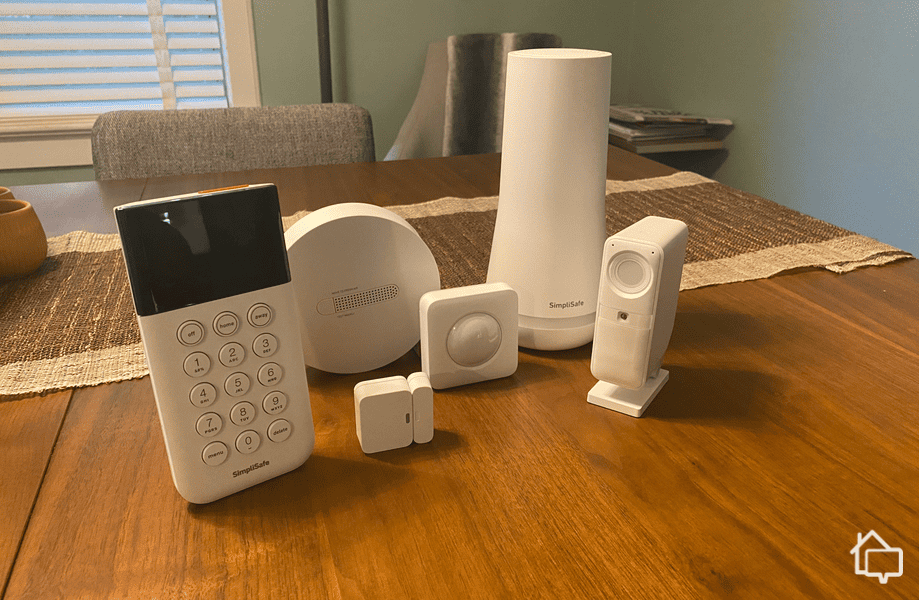
SimpliSafe equipment
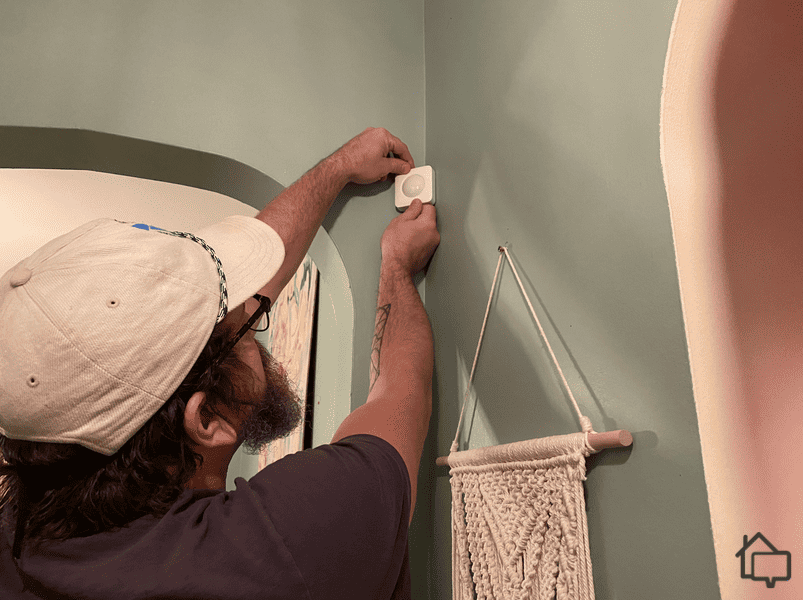
Installing my SimpliSafe motion sensor in the living room.
SimpliSafe focuses on its DIY offerings, which means you’ll need to connect all your wireless components together. SimpliSafe makes that really easy, though, thanks to the security hub. It gives you voice prompts to walk you through every step of the installation and locates all your sensors to connect your security system at the end. That let us set up our entire SimpliSafe system in under 30 minutes.
This is where SimpliSafe has made some major changes since it started. When we first tested it years ago, we didn’t like the professional monitoring plans SimpliSafe offered. It had only one option for professional monitoring, and it wasn’t anything special.
Our impression of SimpliSafe’s monitoring did a complete 180, though, when it introduced its premium Core, Pro, and Pro Plus monitoring plans. They all have Intruder Intervention, which means SimpliSafe agents had access to the SimpliSafe home security camera we tested to see what happened when an alarm triggered. They can even use the two-way audio, which we found out when we triggered our usual test alarms and suddenly heard the agent behind us from our camera. It got our dog barking, but we just let the agent know we were testing our system to confirm everything was good and they lost access to our indoor camera.
FYI: The Pro and Pro Plus plans also offer Active Guard Outdoor Protection. It includes AI facial recognition to match people to your saved profiles. If it’s a stranger, the monitoring center will speak to the intruder via the camera to find out why they’re loitering around your property.
On top of the professional monitoring plans, SimpliSafe has a few DIY monitoring plans for things like cloud storage if you want to keep the cost of your SimpliSafe security system low. You don’t need to buy a SimpliSafe plan, although we definitely recommend it. Here’s an overview of all of SimpliSafe’s paid plans.
| Core Features | Self-Monitoring | Standard Monitoring | Core | Pro | Pro Plus |
|---|---|---|---|---|---|
| Cellular backup | No | Yes | Yes | Yes | Yes |
| 30-day cloud storage for video | Yes | No | Yes | Yes | Yes |
| Smart platform integrations | Yes | No | Yes | Yes | Yes |
| 24/7 professional monitoring | No | Yes | Yes | Yes | Yes |
| Intruder Intervention | No | No | Yes | Yes | Yes |
| Video verification | No | No | Yes | Yes | Yes |
| Active Guard Outdoor Protection | No | No | No | Overnight only | Yes |
| Price | $9.99 per month | $21.99 per month | $31.99 per month | $49.99 | $79.99 |
You know we always give you the good, the bad, and the ugly about every security system we test. Well, smart-home capabilities are where SimpliSafe falls into the bad category. Unfortunately, it just doesn’t offer much beyond basic voice commands. We could arm our system by saying, “Google, arm my security system,” and we could set it to Away mode, but that’s about it. We couldn’t even disarm our system with voice commands, because SimpliSafe thinks that’s a security risk. Getting the integrations up and running was pretty straightforward, though, so that was nice.
>> Learn About: SimpliSafe Home Automation
If you want DIY installation with more smart-home capabilities, you may want to check out Abode. While testing the Abode security system, we were pretty impressed with the Cue home automation system. See how the two stack up against each other in our SimpliSafe vs. Abode comparison.
| Monitoring options | Professional and DIY |
|---|---|
| Installation | Professional and DIY |
| Smart platform integration | Alexa and Google Home |
| Equipment cost | Packages starting at $250.96 |
| Monthly monitoring cost | From $22.99 |
| Contract length | Monthly |

If you want to install the latest technology and you’re not afraid to spend a good chunk of change on your home security system, Vivint is the way to go. It offers the most advanced outdoor security camera we’ve ever tested and a video doorbell with an ultrawide 180-degree field of view.However, unlike most of the wireless equipment on this list, you won’t be able to set up a Vivint security system yourself. Vivint requires a professional to visit and install every single device. While I don’t mind someone else doing all the hard work for me, I’m not a fan of paying $99 for the courtesy.
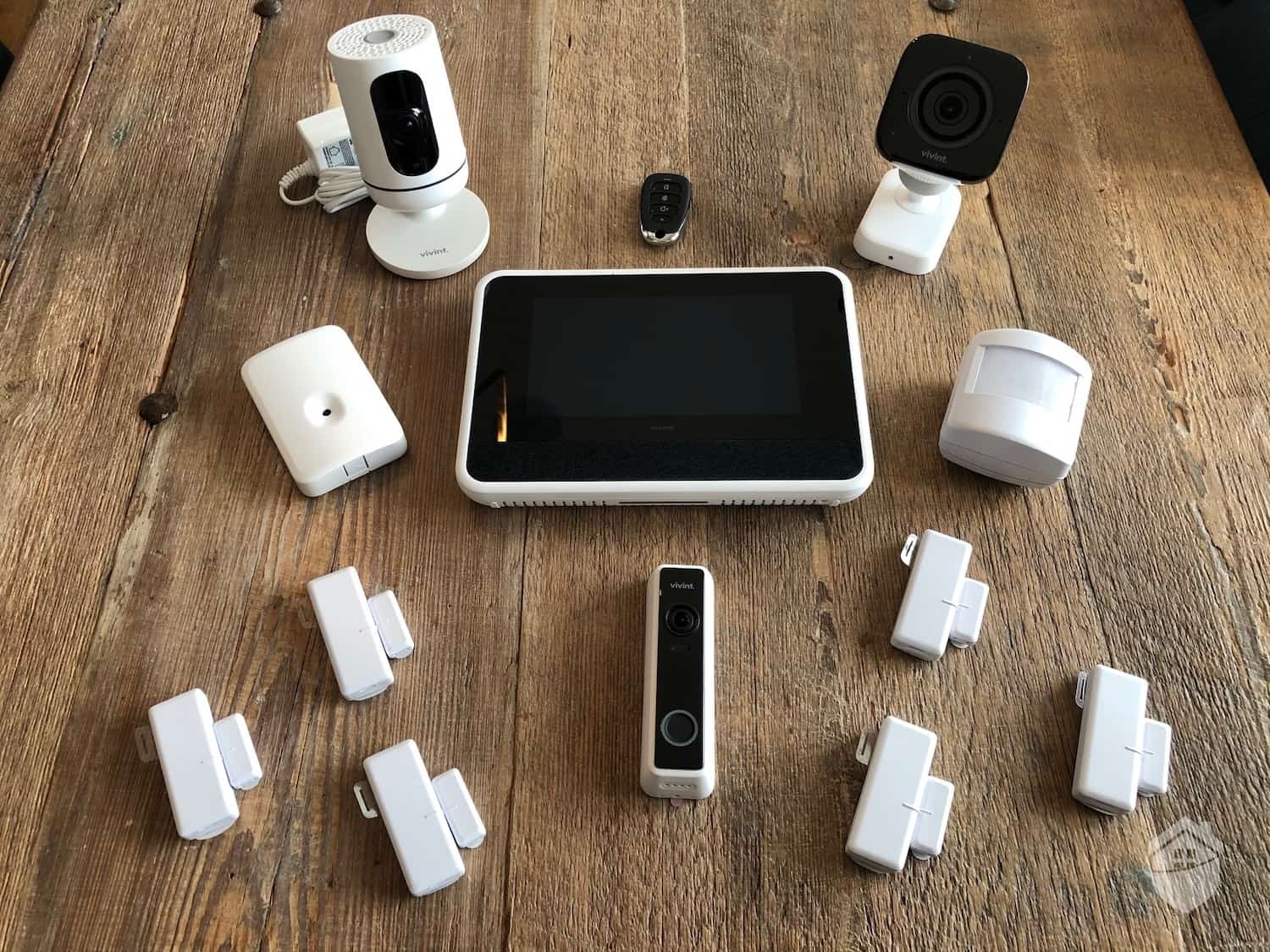
Vivint Smart Home Equipment
Like the other systems on this list, Vivint needs its hub to be plugged in. We’re not sure how we feel about calling it fully wireless, since that’s not 100 percent accurate. Pretty much every security system has a hub you plug in though. Other than that, all of Vivint’s security equipment is wireless. Let’s get into why Vivint’s version of wireless is a bit different.
Most wireless components connect to the internet directly from the device itself. That makes sense. It’s how every wireless device works. Well, that’s not good enough for Vivint. Your wireless signal actually loses a lot of strength when it travels through walls, so Vivint uses a hybrid wireless system for its exterior security components, like the Vivint outdoor camera. Instead of connecting to Wi-Fi from the camera itself, Vivint installers route a small wire through your wall into your home, and the end of that wire is what connects to your Wi-Fi. That avoids the drop in signal you’d otherwise get from your wall.
Did You Know? Your wireless security system still works if your internet goes down. At least all the security systems we recommend here do. They use cellular backup to keep your system connected even if your entire house loses internet or power.
We think it was pretty successful too. If you have three or four security cameras trying to connect over your router, your internet can get pretty slow. We’ve even noticed some buffering when trying to watch the live feed on other security systems that have a more traditional wireless approach. When we tested Vivint’s home security cameras, we didn’t run into any buffering issues for the entire time we had the system in our home. We’d say the hybrid system is a success.
Now we get to Vivint’s weak point. It’s not that it has bad professional monitoring. We’d never recommend a system with bad monitoring. But SimpliSafe’s new Fast Protect plan and ADT’s recent price reductions make Vivint’s price tag feel like it’s not worth it.
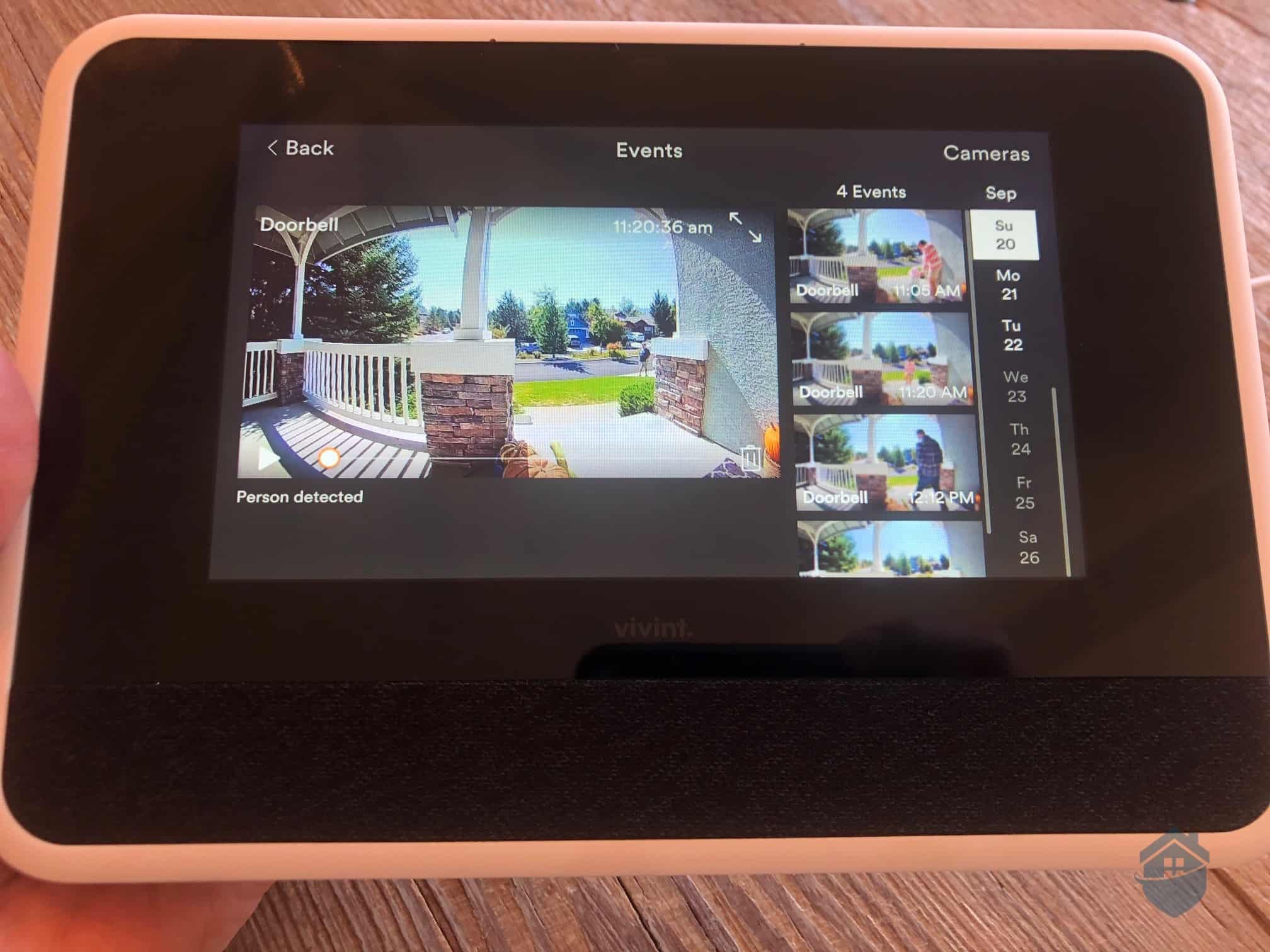
Person Detection on the Vivint Testing our Person Detection on my Vivint Smart Hub
Vivint locks you into a long-term contract and professional monitoring, so it’s not like you have a choice after you buy a Vivint system. You don’t have a choice in monitoring plans either. It’s based entirely on your system, leaving you with one custom quote that ranges from $40 to $60. Here’s a breakdown of Vivint’s monitoring prices so you can figure out how much your system would cost.
| Feature | Cost |
|---|---|
| Basic 24/7 monitoring of sensors | $39.99 per month |
| Cellular backup | $1.48 per month |
| Video support | $5 per month per camera |
| Car Guard for first device | $9.99 per month |
| Car Guard for second device | $4.99 per month |
If you cancel your professional monitoring, Vivint locks you out of everything that makes its systems good, from the app to the smart platform integrations. Basically you’ll be left with a local alarm.
It’s not all bad news though. When we had Vivint in our home, we got responses about 35 seconds after an alarm triggered. That’s not the fastest, but it was good enough to make our list of the best security systems with fast response times.
This is where Vivint really shines. That is unless you have Apple HomeKit. If you do, you may want to go with ADT since it works with the Apple ecosystem. Vivint works with Alexa and Google exceptionally well. We praise Vivint’s smart-home capabilities so much not because of how Alexa and Google can control it, but because of how Vivint can control our smart home.
>> Check Out: Vivint vs. ADT Home Security System Comparison
We had voice commands with our Google Nest Hub, but the Vivint app let us do a whole bunch more. We could set up home automation with almost all our smart devices. For example, we had our thermostat lower the temperature in our house every time we armed our Vivint security system. That saved us a good bit on our electricity bill. It’s why we put Vivint on our list of the best security systems with automation.
| Monitoring Options | Professional only |
|---|---|
| Installation | Professional |
| Smart Platform Integration | Alexa and Google Home |
| Equipment Cost | From $599.99 |
| Monthly Monitoring Cost | From $24.99 |
| Contract Length | 48 to 60 months |


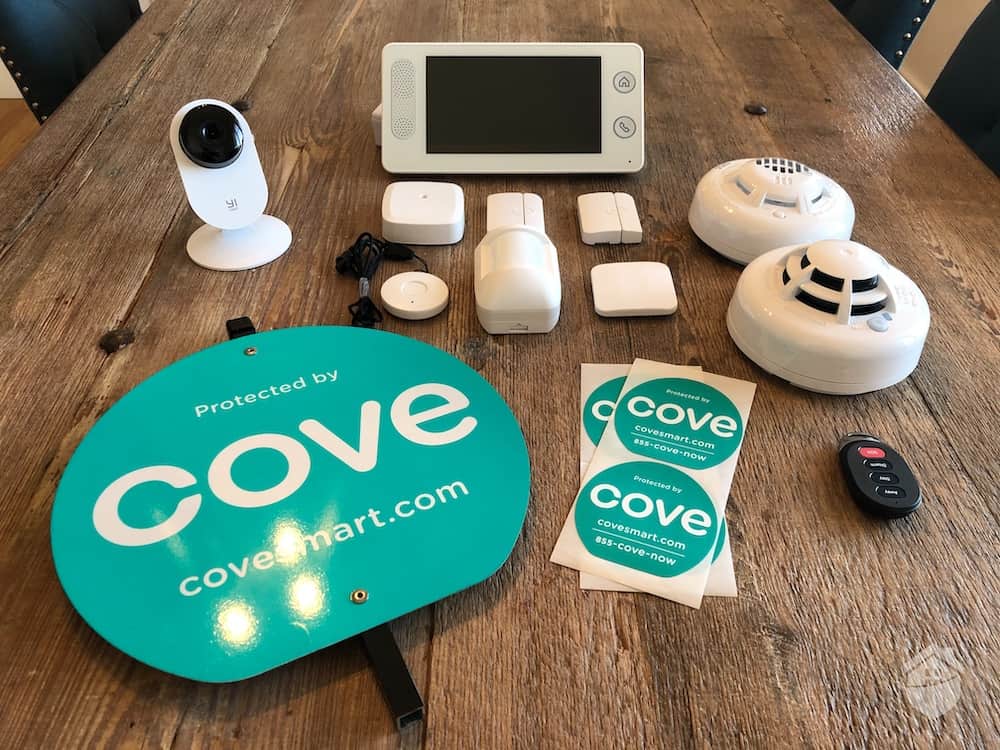
Cove equipment
Cove’s hub needs to be plugged in too, but it actually doesn’t need your Wi-Fi. You can connect it to Wi-Fi to support video feeds if you have cameras, but you don’t need to. It can work entirely off of its cellular backup for receiving alarms from your sensors and sending alerts to Cove’s monitoring center. We like that because it really opens up Cove as an option for rural homes with limited internet options. It didn’t quite make the cut for our roundup of the best home security systems for rural areas, but it would have won fourth place if we’re being honest.
FYI: Cove is currently running one of the best deals we’ve seen. You can get a startup package to build off of for $75 that includes a hub, touch-screen panel, and free indoor camera.
Cove requires one of its professional monitoring plans, but it won’t break the bank. You can choose from a $17.99 or $27.99 plan, making Cove one of the most affordable home security systems. You’ll need a premium plan if you have cameras in your system; otherwise you can go with the lower-cost option, unless you want smart-home integrations. Here’s a quick overview of each plan.
| Cove Basic | Cove Plus | |
|---|---|---|
| 24/7 professional monitoring | Yes | Yes |
| Cellular backup | Yes | Yes |
| Equipment warranty | One year | Lifetime |
| Smart platform integrations | None | Google Home and Amazon Alexa |
| Camera support | No | Yes |
| Price | $19.99 per month | $29.99 per month |
Unfortunately Cove locks its smart-home capabilities behind its premium monitoring plan. To be honest, you won’t be missing out on a whole lot by passing on the Google Home and Amazon Alexa integrations. All it lets you do is use voice commands to arm or disarm your Cove system. You can also set it to Stay, Away, or Sleep mode with your voice. That’s about it though. No fancy automations or intricate integrations across multiple smart devices. If you want to keep the price of your Cove system low, we wouldn’t blame you for going with the basic monitoring plan.
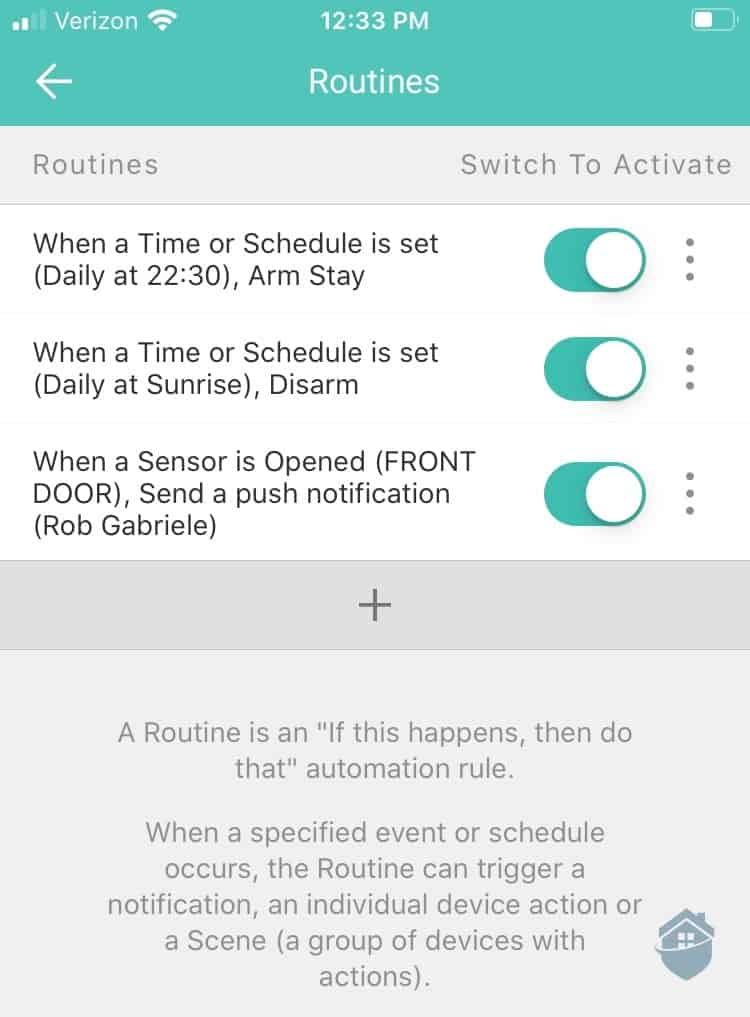
Some of the routines I was able to set up in the Cove app.
| Monitoring options | Professional or DIY |
|---|---|
| Installation | Professional or DIY |
| Smart platform integration | Alexa and Google Home |
| Equipment cost | From $300 for hub and keypad |
| Monthly monitoring cost | From $19.99 |
| Contract length | Monthly |
Unlike some other options on this list, Frontpoint is a cellular-first security system. The Wi-Fi kicks in if it can’t detect an LTE signal. That might explain why some of the equipment is bulkier than the competition. Just take a look at our door sensor versus Ring’s sensor.
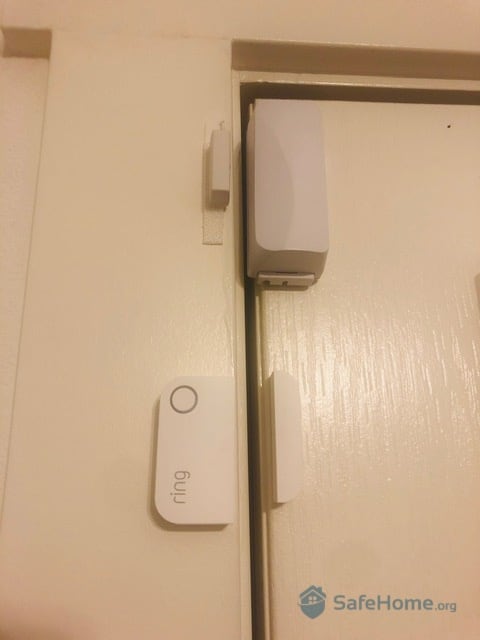
My Frontpoint door sensor and ring sensor are a little bulky
It does have some great smart home features, though, including the option to combine automations for specific scenarios, like when you’re going to bed or leaving for work in the morning. It even integrates with Z-Wave devices. We took advantage of this by activating the coffee machine when our smartwatch detected we were awake.
Obviously, we recommend getting a home security system. Our research revealed some of the benefits, which include:
Beyond the obvious benefit of, you know, not having wires, wireless security systems can bring tons of other benefits. A few key benefits of using a wireless home security system are below.
Pro Tip: If you’re overwhelmed by the idea of installing a home security system, it doesn’t mean you have to choose Vivint or ADT. SimpliSafe, Cove, and many other DIY brands also offer professional installation services. They’ll even take the time to explain how each device works.
As long as it’s a good wireless home security system, it will be reliable. There was a time when we would have advised you to stay away from wireless home security systems, but the top wireless security systems didn’t have cellular backup or battery lives that easily lasted six months. They weren’t as reliable.
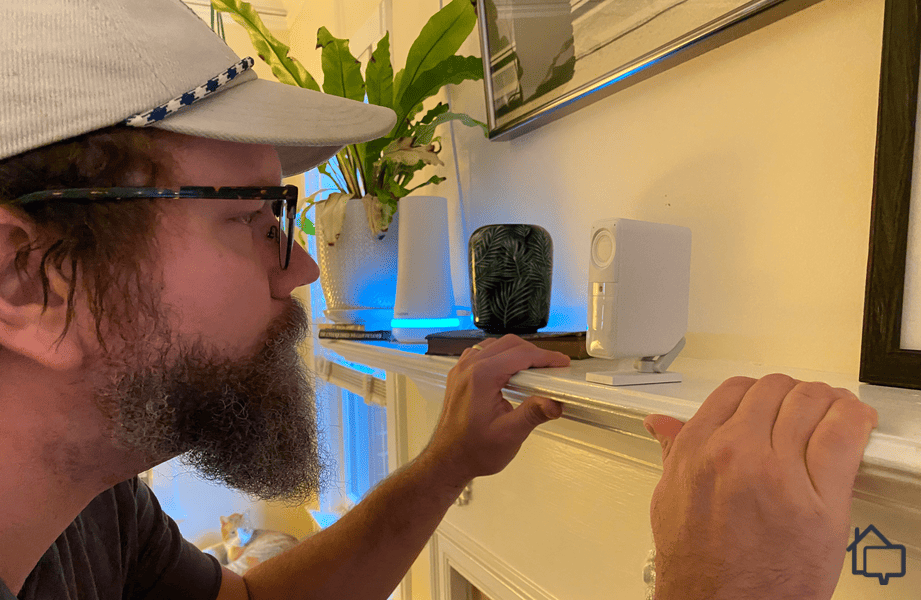
SimpliSafe’s indoor security camera with its privacy screen closed.
Nowadays, the best wireless home security systems have tons of redundancies built in, whether it’s a security hub that can connect to your internet through Wi-Fi or an ethernet cable or cellular backups that keep your system up and running even if you lose power altogether.
Wireless home security systems are just as reliable as hardwired ones, but it all comes down to the provider you choose.
Aside from the obvious feature of not having wires, you may be a bit confused about what makes a security system wireless. There are also hardwired security systems and no-landline security systems, so what’s the difference?
FYI: If those sound more up your alley than a wireless security system, check out our roundups of the best no-landline home security systems and the best hardwired home security systems.
From Anthony Travaglia, Retired Police Officer, Home Security Expert:
It seems like most security systems we test offer a wireless setup. There aren’t a whole lot of drawbacks to a wireless system, but there are tons of advantages. It makes sense that the industry is moving in that direction.
It may be nice to have options, but that doesn’t make choosing the right security system for you any easier. With dozens of providers offering wireless capabilities, it’s hard to narrow them down. That’s why we did it for you. Each of these systems has been personally tested and vetted by our team of home security experts, so you know you can count on whichever one you pick to protect you and your family.
In our opinion, ADT has the best wireless home security system, with its recent partnership with Google and professional monitoring you can always count on.
Yes, wireless security systems are absolutely good. There’s a reason most of the industry is moving in the wireless direction, and that’s because it works.
Most wireless security systems support security cameras, but make sure your internet is fast enough to support them.
Tons of providers advertise entirely wireless home security systems, but we think it’s a bit of a misnomer. That’s because you’re still going to need to plug in your security hub. Other than that, the rest of your security system can go wireless.
It may surprise you, but you actually don’t need reliable Wi-Fi for a wireless home security system. Most providers offer cellular backup, so your system will stay running even if your Wi-Fi goes down.